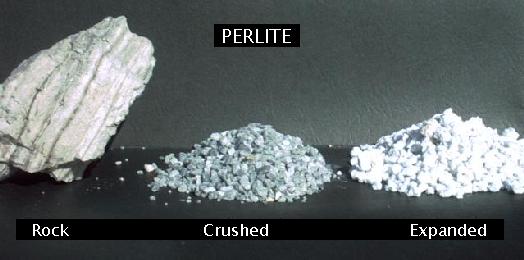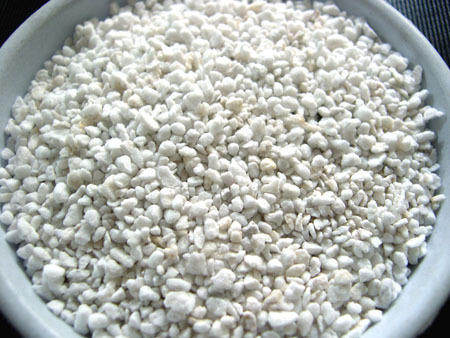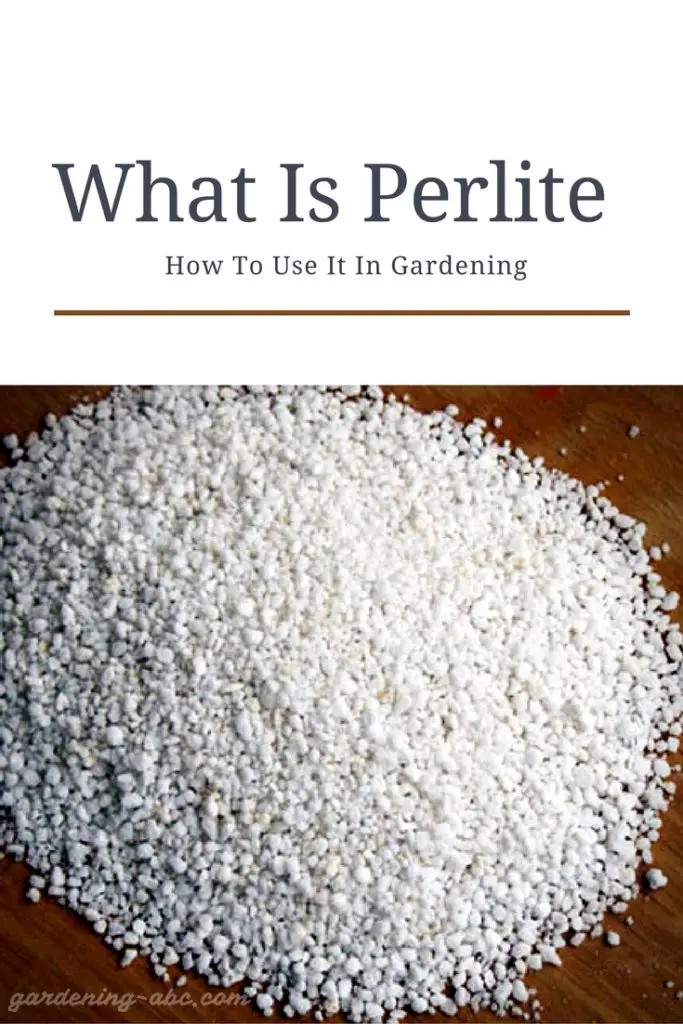We use affiliate links to run our site. When you buy through links on our site, we may earn an affiliate commission, without any added cost to you. Learn more
When it comes to growing healthy and strong plants one of the many things you will discover is the use of perlite. Whether you’re a commercial grower or simply prefer to grow your own food in the garden, perlite is something that you can add to your soil quite easily.
Perlite uses are very common in horticultural and gardening applications, especially for starting seeds but what exactly is it? What are the benefits of horticulture perlite? Is perlite safe to use? I will try to answer all these questions in this post.
The perlite we use in gardening is called expanded perlite It is not the same as it is found in nature. Click To TweetWhat is Perlite?
Perlite is a naturally occurring siliceous amorphic volcanic rock. But unlike other volcanic glasses, if heated above a point (8000-9000 C), they expand up to 20 times their original volume.
Because of its unique properties, this naturally occurring mineral can be used in many different industries including gardening and horticulture.
It is a very useful material to have around the garden. You can use it as a soil additive to improve soil structure, and also in other areas of horticulture like hydroponics or preparing potting soil.
When heated perlite can expand up to 20 times of its original volume Click To TweetHow It is Made?
The perlite is made when the volcanic lava emitted from the volcanos, cools down rapidly, in a cooler atmosphere. Due to this rapid cooling, the water vapor got trapped inside the rock and the whole molten rock transforms into a glass-like structure.
What is Perlite Made of?
As an amorphic volcanic glass, perlite is mostly made of silica or SiO2 (about 70-75%). Other than you will also find a mixture of Aluminum Oxide or Al2O3, and Oxides of Sodium, Potassium, Iron, Magnesium, and Calcium, and moisture.
The perlite we use in gardening is not the same as it is found in nature. Perlite is a natural volcanic glass. These tend to have more water in them than other types. In nature, they are grey or black in color and are very dense and heavy.
How to Make Perlite Suitable for Horticulture?

You can not use nature’s perlite to grow plants. What we use in growing plants is called expanded perlite. Once the dark grey perlite is heated at a temperature above 850 deg C it becomes soft.
The water that was trapped inside the rock vaporizes and tries to escape. As a result, the rock expands more than 10 times its initial size. This expansion of the rock also creates its most distinguishing feature; its unique white color.
Expanded Perlite has many tiny air chambers. These tiny cells absorb moisture on the exterior of the particle and prevent it from entering inside. That is why it is particularly useful in providing moisture to plant roots.
This expanded perlite is much lighter in weight and becomes porous. You can crush these with normal pressure. The best part is it is a clean, sterile, lightweight material and doesn’t decay or shrink.
Is Perlite Good For Cuttings?
Perlite is probably most well-known for its use as a seed starter and growing seedlings since it offers excellent drainage and aeration properties that are perfect for promoting healthy growth. But It works especially well for rooting cuttings.
For propagating a plant from cuttings, simply dip the cut end of the stem in rooting hormone and then place the cut end into the moist perlite.
One of the best growing mediums for propagating leaf cuttings is a combination of v combinations of vermiculite, coarse sand, or a mix of equal parts perlite and peat moss according to Iowa State University Extension.
Perlite vs Diatomaceous Earth:
Perlite is often compared to diatomaceous earth, another additive that many gardeners use in their flower beds and vegetable gardens. But they are not the same.
Diatomaceous earth is made from crushed fossils, which is why it contains sharp edges. The sharp edges of diatomaceous earth allow it to cut through thick layers of dirt and kill insects by slicing them up as they walk across the surface of the substance.
Is Perlite Toxic?
Perlite is not toxic. However, protect your eyes and mouth while using it. Perlite can create eye irritation and respiratory problems if you ingest.
Where Can I Buy Perlite?
Finding perlite for plants should not be a problem for any gardener. They are mined throughout the world. Countries like Greece, the USA, China, and Turkey are the forerunners in this.
You can buy horticulture perlite at your garden store nearby or you can buy it online. Don’t forget to read the product details thoroughly while buying.
Various Perlite Uses:
Because of its low density and low price, it is used for many commercial applications. Some of the main perlite uses are in building and constructions, horticulture, filters, and filter aids. In gardening and horticulture, perlite is used for many reasons.
How Does Perlite Work?
Perlite works by filtering the excess water out of the soil and holding some water and nutrients in its cavities for plants to absorb. These nutrients are essential for plants, especially when they are grown in pots or on raised beds.
Having said that, perlite alone will not provide adequate levels of nutrition to your plants. Soil amendments like compost, worm castings, etc are also necessary.
These amendments provide the necessary nutrients and microorganisms that can break down organic matter into forms that plants can use.
The reason perlite works so well in gardening is that it is porous, has capillary action, and can store water for extended periods of time.
All of these characteristics work together to improve soil structure, aeration, and drainage. All three are essential for plant growth.
Apart from gardening perlite is also used in building and construction works Click To TweetAdvantages of Perlite Soil in Gardening and Horticulture:
Adding perlite to your garden has some undeniable benefits. Here are some reasons why you should use it in your garden
- Perlite encourages quicker germination than any other growing media. You can experience quick seedling growth. It can be used by mixing with peat moss, or coconut coir, or use as potting soil. You can also use it solely to germinate seeds.
- Perlite is inorganic, inert, and sterile. Being a naturally occurring mineral perlite has many nutrients that are essential for plants’ growth. It is also free from weeds, diseases, and pests.
- It is non-toxic and there are very few fire hazards.
- Unlike peat moss, perlite soil does not decompose very easily (if at all) so you can store and use it for many years.
- Perlite soil mixtures have very good aeration and drainage facility. Adding perlite is probably the quickest way to increase the drainage of your garden soil. This is particularly helpful in raised beds or container planting.
- It is almost pH neutral. So you can use it to reduce the soil-acidity.
Disadvantages of Perlite Soil:
There are some of the disadvantages also of using perlite as growth media.
- Perlite holds water by having a large surface area and within the nooks and crevices of vast pores. But being porous and made of volcanic glass it allows the excess water to drain away much quicker than any other media. So if you have really thirsty plants, investing in perlite might not be a good choice.
- It is a non-renewable resource. So you can not increase its availability as per your likings like that of coconut coir.
- While using perlite, eye and mouth protection are recommended, if you don’t want to ingest any of the dust. Although it is not toxic, the dust can create respiratory problems and eye irritation. Use respirators like this to protect yourself while working with it.
Types of Perlite: Coarse Vs Fine:
Coarse Perlite:
This type of perlite has a large particle size and hence it has better air porosity than the fine perlite. Coarse perlite is used to improve the drainage of soils while retaining nutrients and moisture.
This is a very good choice if you are planning to grow orchids or succulents. The main downfall of using coarse perlite is it doesn’t blend well with the soil mixes.
Fine Perlite:
Due to its smaller particle size, fine perlite is best suitable for mixing with potting soil to improve its drainage capacity and as seed starters.
How Much Perlite to Add to The soil?
For growing plants you can add from 10%- 50% depending on your need. The more the percentage of perlite, the more will be airflow for the roots but on the flip side, you have to add more nutrients because most of the nutrients will be drained out with the excess water.
Add 10-20% if you want to add fewer nutrients and water to your mix. Whereas if you go for a 30-50% mix, your soil will get lots of airflows (excellent for the roots) but you have to add nutrients and water more frequently.
Perlite Vs Vermiculite:
One alternative to perlite is vermiculite. Some gardeners prefer to use vermiculite over perlite because of their water retention capacity.
Vermiculite generally retains more water so it makes them a perfect choice for seed starters. They can also absorb nutrients along with water.
Vermiculite is a very good option if your plants need lots of water. Mixing perlite with vermiculite makes it a more balanced media.
Vermiculite absorbs water and nutrients whereas perlite makes sure that the excess water drains away. They are more of a complementary to each other than an alternative.
How long does it last? / Does perlite decompose?
Perlite is inorganic and does not decompose with time, so it is a good choice for growing plants.
Use of Perlite in Hydroponics:
Perlite uses in hydroponics are very popular nowadays. In case you have never heard about hydroponics, this is a method of growing plants in an enclosed growing space, a controlled environment, and with very little water.
Because of its moisture-holding capacity, it is an excellent growing medium under these conditions.
Perlite is used in hydroponics mainly to propagate plants. As roots start to grow in search of a water source, a well-draining media like coarse perlite forces them to grow rapidly. It prevents plant roots from rotting.
Other Perlite Uses:
It is an excellent filtering agent. Perlite loose-fill insulation is used in the hollow cores of concrete block or cavity-type masonry walls.
Besides as a seed starting material in horticulture, Perlite filters are used in many places to filter beer before getting bottled.
In Summery:
Horticultural perlite is a great soil additive. Its ability to retain moisture and the air pockets within it will keep your plants healthy, strong and productive.
Perlite is inert and will not chemically interact with any other substance so you can be sure that you are always safe.
I hope you will find this information about perlite useful. Go, give it a try and see if you like the results.
Don’t forget to pin it

Amazon and the Amazon logo are trademarks of Amazon.com, Inc, or its affiliates.


Your posts is quite useful.
Very nice write-up. I certainly appreciate this site.
Keep writing!
complete overall information about perlite. Very concise but relevent